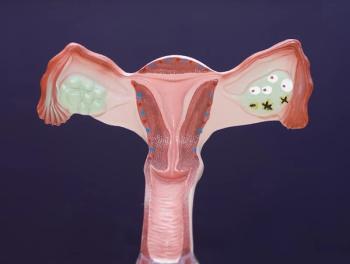
Teclistamab/SC Daratumumab Improves Survival in R/R Multiple Myeloma
Investigators plan to present detailed findings from the MajesTEC-3 study at a future medical conference and share them with regulatory authorities.
Combining teclistamab-cqyv (Tecvayli) with subcutaneous daratumumab and hyaluronidase-fihj (Darzalex Faspro) significantly improved survival outcomes vs investigator’s choice of standard of care among those with relapsed/refractory multiple myeloma, according to a press release on top-line results from the phase 3 MajesTEC-3 study (NCT05083169).1
With approximately 3 years of follow-up, the teclistamab-based combination reached the trial’s primary end point of progression-free survival (PFS), showing a statistically significant improvement in outcomes vs subcutaneous daratumumab in combination with pomalidomide (Pomalyst) and dexamethasone (DPd) or bortezomib (Velcade) and dexamethasone (DVd). Additionally, the experimental regimen demonstrated a statistically significant overall survival (OS) improvement at the time of the first interim analysis.
The safety profile of teclistamab plus subcutaneous daratumumab in the MajesTEC-3 trial was comparable to prior reports of each individual agent. Investigators intend to share detailed results from the trial at a future medical conference and share their findings with regulatory health organizations.
Developers noted that the MajesTEC-3 study is the first phase 3 trial to exhibit improvements in PFS and OS with teclistamab plus subcutaneous daratumumab vs current standards of care in this multiple myeloma population. An independent data monitoring committee has recommended the unblinding of the trial based on the statistically significant findings from the interim analysis.
“[Teclistamab] is the most utilized BCMA bispecific in later lines of myeloma treatment, supported by extensive clinical and real-world evidence. These results demonstrate the clinical benefits of [teclistamab] in earlier lines when used in combination, as evidenced by meaningful [PFS] and [OS] outcomes,” María-Victoria Mateos, MD, PhD, consultant physician in hematology at the University Hospital of Salamanca in Spain, stated in the press release.1 “[Teclistamab] and [subcutaneous daratumumab] uniquely work together to target both BCMA and CD38 simultaneously, priming and activating the immune system and eliminating myeloma cells.”
Investigators of the phase 3 MajesTEC-3 trial compared the safety and efficacy of teclistamab plus subcutaneous daratumumab with subcutaneous daratumumab plus DPd or DVd among 587 patients with relapsed/refractory multiple myeloma.2 In the experimental arm, patients received step-up dosing of teclistamab before proceeding to the first full dose.
The trial’s primary end point was PFS per International Myeloma Working Group (IMWG) criteria. Secondary end points included overall response rate, very good partial response rate, complete response rate, minimal residual disease negativity, OS, time to next treatment, duration of response, time to worsening of symptoms, and adverse effects.
Patients 18 years or older with documented multiple myeloma per IMWG standards, measurable disease, and 1 to 3 prior lines of therapy, including a proteasome inhibitor and lenalidomide (Revlimid), were eligible for enrollment in the trial. Other eligibility criteria included having documented evidence of progressive disease on or after the most recent line of treatment, an ECOG performance status of 0 to 2, and clinical laboratory values within the specified range.
Those with prior receipt of BCMA-directed therapy, disease considered refractory to anti-CD38 therapy per IMWG criteria, and a cumulative dose of corticosteroids consisting of 140 mg or greater of prednisone within 2 weeks of random assignment were ineligible to enroll. Having plasma cell leukemia at the time of screening, Waldenström macroglobulinemia, or primary amyloid light chain amyloidosis was also grounds for exclusion from the trial.
“We are confident this combination is poised to be a new standard-of-care option…. The increase in [PFS] and [OS] is another example of how our portfolio is fundamentally transforming how patients with multiple myeloma are treated,” Yusri Elsayed, MD, PhD, MHSc, global oncology therapeutic area head at Johnson & Johnson Innovative Medicine, concluded.1
References
- TECVAYLI plus DARZALEX FASPRO combination regimen significantly improves progression-free survival and overall survival versus standard of care. News release. Johnson & Johnson. October 16, 2025. Accessed October 16, 2025. https://tinyurl.com/4vd4uss9
- A study of teclistamab in combination with daratumumab subcutaneously (SC) (Tec-Dara) versus daratumumab SC, pomalidomide, and dexamethasone (DPd) or daratumumab SC, bortezomib, and dexamethasone (DVd) in participants with relapsed or refractory multiple myeloma (MajesTEC-3). ClinicalTrials.gov. Updated October 10, 2025. Accessed October 16, 2025. https://tinyurl.com/3v2yphc5
Newsletter
Stay up to date on recent advances in the multidisciplinary approach to cancer.


















































































